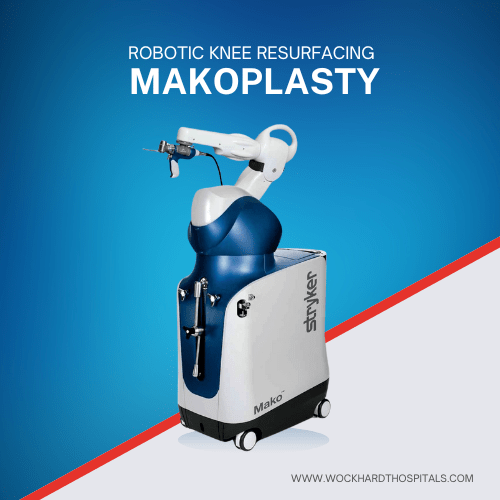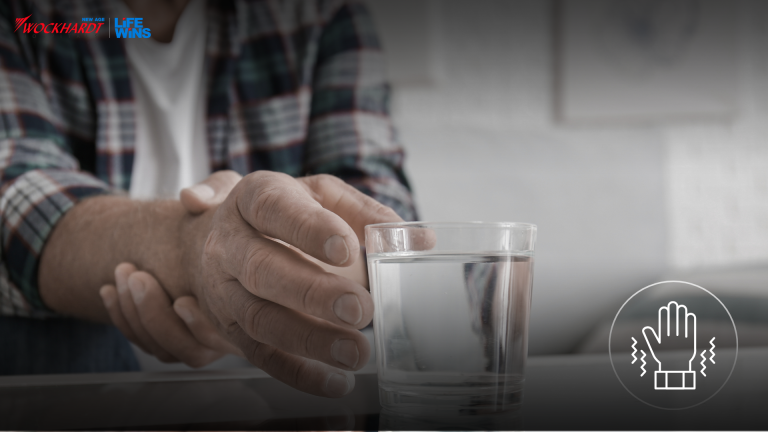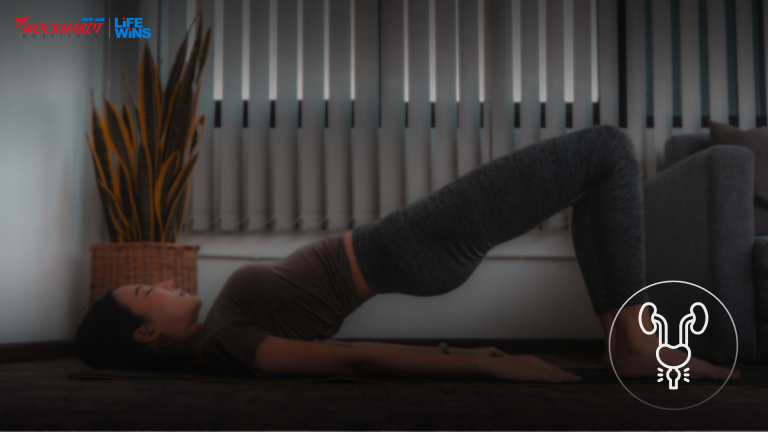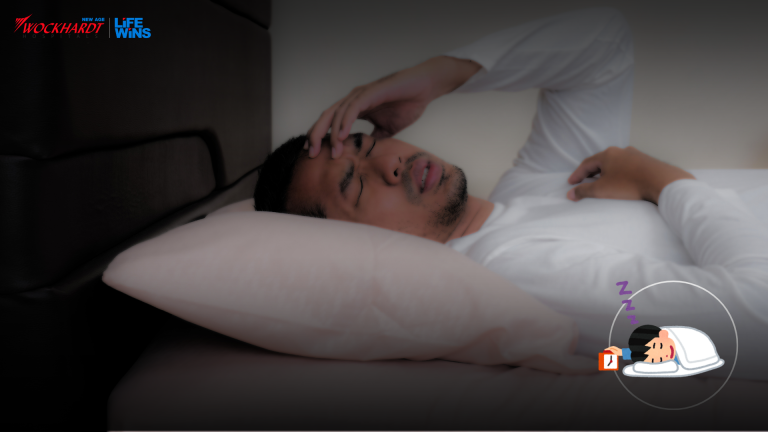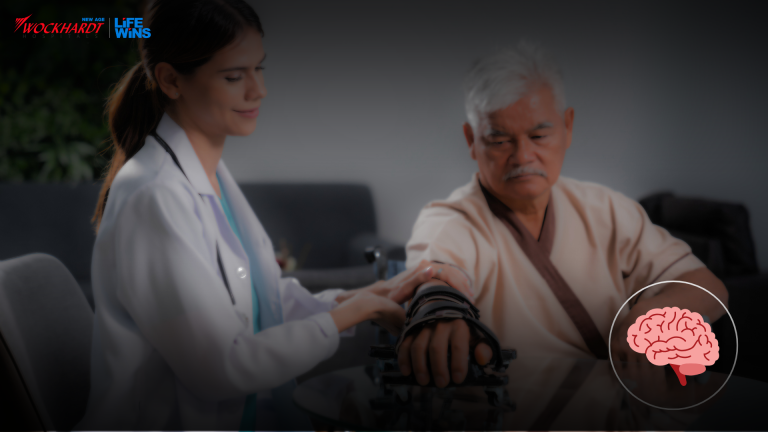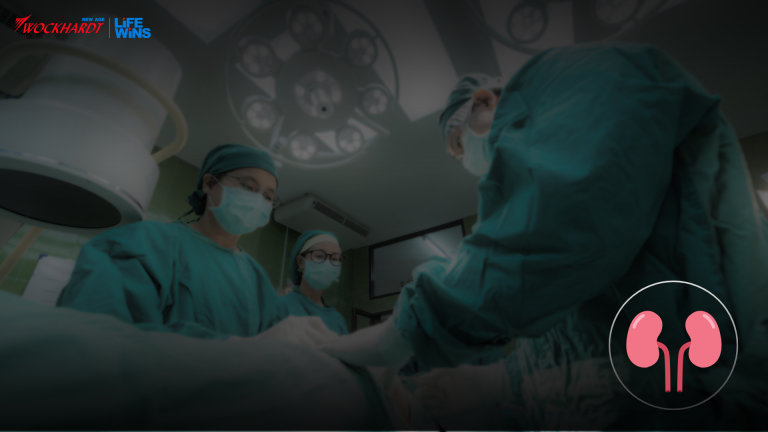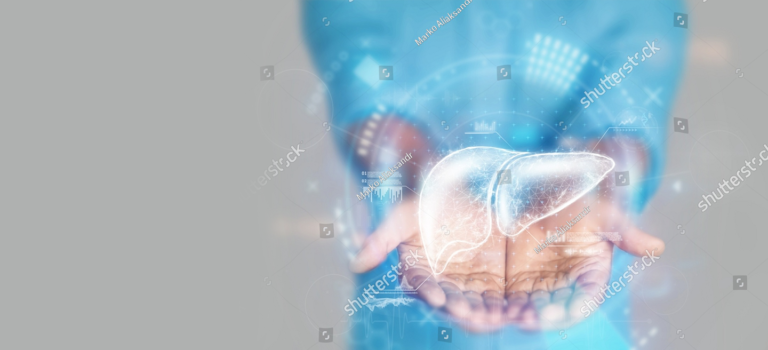4 Things you Can Say to Soothe a Depression Patient

The caregivers play an important role to keep depression patients safe. Read on to know more. Understanding mental health conditions is still a task for us. And if someone known to us is dealing with something, it becomes pretty hard for us to talk to them, especially because we feel unsure of what might offend him or her. That’s why it is critical to know how to deal with someone who is tackling mental health issues like depression. Dr Rahul Khemani, a psychiatrist at Wockhardt Hospital, Mumbai says, “When caregivers of patients dealing with depression come to me, their first and foremost question almost always is “what do we do now?”. Most of them are clueless about how to talk to the concerned person, what to say to them, and what to avoid.” He adds, “My only reply is, just listen to them, as this is all they want.” People Dealing with Depression are Always Looking for a Safe Space Dr. Khemani suggests that everyone seeks a comfortable space to open up and talk, and so do people who are dealing with depression. He listed down a few things that you need to keep in mind if someone around you is dealing with depression: Don’t judge them: They will only speak to you if they are comfortable to confide in you. Once they feel you’re trustworthy and non-judgmental, they will open up to you easily. Don’t assume: “I have seen many people not asking the person who is undergoing depression about things, instead they presume everything about their needs. Not everyone will cheer up by going out or by eating their favorite meal, everyone has different needs and you can only get to know them when you’ll ask them. There is always a possibility that you might think they need it, but according to them they don’t need it at all.” Don’t use any platitude phrases: This is one of the most common things, and must be strictly avoided. People use phrases like ‘ it’s not a big deal, we all have been through it’ or ‘you need more will power’, etc. without understanding the situation the person is in. They don’t understand that this might bring the person down. Four Phrases that you Can Say to Someone who is Dealing with Depression: 1. I’m sorry you’re going through this This will build a connection between you and the person. 2. Do you want to talk more about this? This phrase will create a feeling of empathy. It will build bonds and create more trust. Also, this gives a window to the person dealing with depression, whether to opt-in or out rather, rather than being forced into a conversation. 3. Whenever you need me, I’m there A friend in need is a friend in deed and this statement actually certifies that you are someone s/he can bank on. “A person dealing with depression is at times hopeless. A statement like this will make him/her feel worthy,” says Dr Khemani. 4. You are not alone in this This statement is again a testament of you being there with a person in their thick and thin. “Be careful when you say you understand their problem. It can act as a double- edged sword. Some people might feel good but some might get offended, and feel that you do not understand their situation. So, one can say I might not understand what you are going through but I’m there for you”, he suggested. The Last Word We need to acknowledge that depression is real, and not just in the mind. It’s not a quick fix, it will take its own time. Your job is not to fix a person; instead, your job is to support them. That will make the person feel reassured. In psychology, there is a concept of expressed emotions that can either be positive or negative. Positive is when you allow the person to heal, and negative is where you are commenting on someone’s behavior without knowing the exact reason. Therefore, talking and hearing the person out is very important, so that you pull them out of depression. So, use these tips and help someone who is in need! Source: https://www.healthshots.com/mind/happiness-hacks/here-are-4-things-you-can-say-to-soothe-a-depression-patient-according-to-a-psychiatrist/
Stroke: Symptoms, Causes & Treatment

What is a Stroke? One of the most prevalent conditions among all neurological disorders is brain stroke. A stroke occurs when blood flow to part of the brain is interrupted or reduced, depriving brain tissue of oxygen and nutrients. This condition typically affects the elderly, but it has recently started to impact younger people as well. The risk factors associated with a stroke include high blood pressure, diabetes, cardiovascular disease, smoking, and alcohol consumption. Stroke Symptoms The importance of time needs to be understood when symptoms of a stroke start or if you think that you or someone you know has suffered a stroke. Early intervention following a stroke is necessary for timely management. The following are stroke symptoms: Causes of Stroke Hemorrhagic and ischemic strokes are the two main types of strokes, with distinct causes of stroke and effects on the brain.Ischemic strokes – Usually, blood clots cause ischemic strokes, which can be triggered by various factors, including: Hemorrhagic strokes – Compared to ischemic strokes, hemorrhagic strokes are less common. They occur when a blood artery within the skull ruptures, leading to blood seeping into and around the brain. Hemorrhagic strokes can also be caused by various factors, including: The risk of stroke can also be influenced by several other diseases and factors. These include: Stroke Treatment The course of therapy for an emergency stroke varies depending on whether it is hemorrhagic or ischemic. Ischemic Stroke The brain’s blood flow needs to be promptly restored in order to treat an ischemic stroke. This might be done using: Hemorrhagic Stroke The goal of emergency treatment for hemorrhagic stroke is to stop the bleeding as soon as possible and lower the pressure that extra fluid is putting on the brain. If the stroke was caused by an aneurysm, arteriovenous malformation (AVM), or other blood vessel disease, your doctor may suggest one of these procedures: Even today, there is not enough awareness in our society about stroke. Most important thing is to recognize the symptoms. Accurate and early detection of symptoms helps the patient to get early treatment and consequently reduces the risk of permanent disability. For this, we ask everyone to remember the formula of “BE FAST”. B stands for Balance, E stands for Eye, F stands for Face, A stands for Arm, S stands for Speech and T stands for Time. Always remember that a stroke is a sudden onset of paralysis, which is recognized by the sudden loss of balance, squinting of the eyes, crookedness of the face, loss of strength in the limbs, and difficulty in speaking. When the blood supply to the brain is disrupted for some reason brain cells do not get enough oxygen supply through the blood, as a result, these cells start to die (almost 36,000 neurons die every second) and this affects the functioning of the body. This condition is called a stroke. The most important thing in this situation is “Time”. Such patients should be immediately rushed to a hospital where CT scans, MRI facility, and Neurologists are available within the first 4 ½ hours of symptoms got noticed. This 4 ½ hour period is called the ‘Golden Hour’, during which if the patient receives immediate and appropriate treatment, the effect of stroke can be prevented which results in the preservation of brain cells. In medical terminology, there is a saying ‘Time is a neuron’. In a stroke, time is a neuron. Failure to do so may possibly make the patient permanently disabled. If the patient arrives at the hospital within 4 ½ hours, he/she can be diagnosed and can be given a TPA injection, which dissolves the clot & improves the blood supply to the affected part of the brain. This is called thrombolysis. Before giving this medicine, the doctor makes sure that there is no bleeding in the brain. Sometimes within six to twelve hours, a test called DSA (Digital Subtraction Angiography) can accurately identify a blockage in a blood vessel and the blockage can be removed by a ‘Mechanical Thrombectomy’ procedure. At Wockhardt Hospital, Nashik, we have implemented a ‘Code White’ system for immediate treatment of paralyzed patients. In this, the paralyzed patient is thrombolysis with a proper diagnosis within 30 minutes of admission to the hospital. For this, Neurologists, Radiology Technicians, Nursing supervisors, and Pharmacists all come together immediately and TPA injections are made available just as quickly. Due to all these measures, numerous paralyzed patients have survived at Wockhardt Hospital, Nashik, and are doing well. In the end, all I can say is that by accurately identify the symptoms of a stroke and move the patient to the hospital within four and a half hours without fear in such a situation, the rest of the patient’s life will surely be happy. Thanks! Dr. Vishal Sawale PatilMD, DM (Neurology)Consultant – NeurologyWockhardt Hospitals NashikFor Appointment, Call – 02536624444 FAQs on Stroke Q. What happens after stroke? A stroke can alter your thoughts, memories, and senses, including hearing, seeing, and the perception of the environment. Different degrees of physical and cognitive disability, such as weakness, paralysis, difficulty speaking, and memory loss, can occur after a stroke. Q. Can stroke be cured? Thrombectomy is an emergency treatment that can be used to treat some severe ischemic strokes. In order to fix the ruptured artery in the brain, an extensive surgery is necessary after a hemorrhagic stroke. A long-term, continuous rehabilitation programme is the key to recovering from a stroke. Q. Can I be normal again after stroke? Although recovery from a stroke varies, many people manage their medical condition, undergo therapy, and go back to a substantial degree of normality. The degree of recovery relies on a number of factors, including the severity of the stroke and the efficacy of the treatment. Q. What are good signs after a stroke? Immediately after a stroke, achieving a quick recovery or regaining skills is often encouraging. For example, the ability to cross your legs during the initial stages of recuperation may serve
A Psychiatrist Explains the Benefits of Turning Off Your Phone for Mental Health

Do you feel bothered by your phone notifications? The unwanted and never-ending notifications make you scroll through your phone mindlessly for hours and for no good. We don’t realize it but somehow they are affecting our mental health and sanity. A lot of research has been done on how a phone affects the brain in terms of radiation and cancer involvement with not many convincing results. However, one thing is for sure that the phone is changing our behavior, mental health, and well-being as well. But turning the notifications off can actually have long-term mental health benefits. We got in touch with Dr. Sonal Anand, Psychiatrist, Wockhardt Hospital, Mumbai to explain to us how. Dr. Sonal said, “The number of likes and positive comments that we get activates the reward center of the brain and hence addiction becomes highly likely. While the positive influences of social media on societal change cannot be doubted, the individual negative effects are what is bothering research scientists.” The constant virtual phone communication deprives one of a face to face interaction which is critical as non-verbal cues and body language have been an integral part of our evolution. The virtual image and real image become two parts of the individual and the resultant conflicts arising from the disbalance of the two is what mainly brings about negative changes. Cognition is definitely affected by the rampant use of phones in the form of attention, memory, and prioritization problems. Sleep patterns could get dysregulated due to the blue light from screens leading to further problems. Constant Notifications Anxiety Addiction to a phone is what most people and parents fear and for good reason. This constant bombardment of information makes the brain less focused on the task at hand and makes us prone to a variety of mental health issues. Anxiety and depression, being stress-prone, are known effects of prolonged use of the phone. Dr. Sonal further explains, “Suicidal behavior due to prolonged and continuous phone usage has also been observed. Being anxious about phone notifications is a worrying trend. Fear of missing out (FOMO) can really keep you on edge and make you constantly keep an eye on notifications. Phantom vibrations are experienced by many people. These mysterious tricks that the brain plays make us check our phones unnecessarily and find mistaken sensations from the phone.” Turning Off Notifications Helps you Focus on the Things That Matter Sometimes some people are on the phone waiting for notifications because they feel that there is nothing else to do. “These common habits definitely affect interpersonal behavior and just a simple measure of turning off notifications from time to time can really help improve the situation. It reduces anxiety, stress, makes you focus better, definitely helps you sleep better and have good real relationships with others,” Dr. Sonal concludes. Source: https://www.idiva.com/health-wellness/mental-health/how-bedtime-stories-help-adults-who-struggle-with-sleep-and-anxiety/18016068 FAQs on Notification Anxiety Q. Are phone notifications stressful? Indeed, notifications can be stressful since they continuously require attention, which can cause distraction and cognitive overload. This constant disruption impairs mental health by making it difficult to concentrate and raising anxiety levels. Reducing time spent on notifications helps reduce stress and encourages a positive connection with technology. Q. What is a push notification? A push notification is a message or alert an application or website sends to a user’s device. The user does not have to actively open the app or website to receive it—it is “pushed” to them. Updates, promotions, and reminders are frequently sent via push notifications, which show up in the notification centre or on the device’s lock screen. Q. What happens when you turn off notifications? When you disable notifications, you may stop receiving alerts or messages from applications or services on your mobile device. This may result in less stress, more attention, and fewer distractions. It also facilitates a healthy balance between technology use and mental health by giving you more control over your digital surroundings. Q. How do you deal with notification overload? Put essential apps first and mute or stop alerts from less important sources to help you cope with the overflow of notifications. Turn on the “Do Not Disturb” settings when working or taking breaks that need concentration. To ensure an acceptable volume of notifications, periodically check and modify your notification preferences. To promote more focus and less stress, think about setting aside specific times to check notifications instead of responding to them immediately. Q. How does notification affect the brain? Notifications activate the brain’s reward system, releasing dopamine and increasing arousal and distraction. This continuous stimulation can decrease productivity and general mental health by causing stress, impairing focus, and negatively affecting cognitive function.
Pop goes the pimple
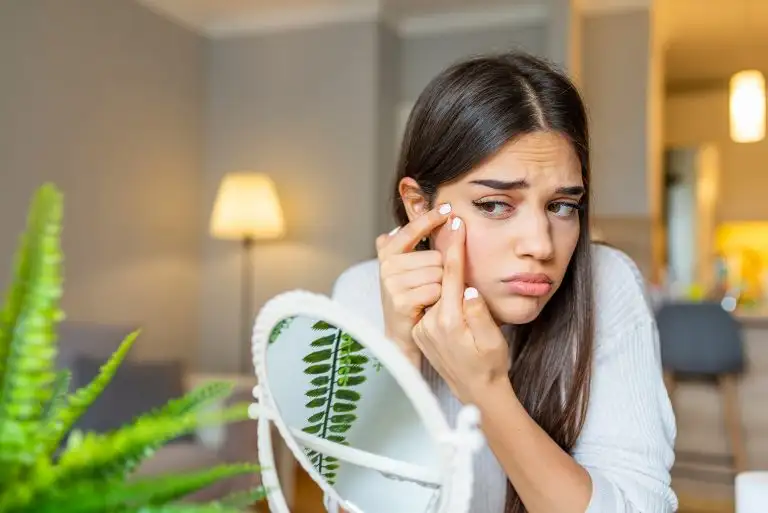
Pimples come in different types, and so does the treatment. Here’s how to identify them correctly and treat them Acne vulgaris is the most common skin condition in the world, a concern for pubescents as well as adults. And hormonal change is just one of the several causes What we usually blindly classify as pimples, breakouts or acne erupts, most commonly, on the face, chest, shoulders, back and upper arms. The causes vary, so do the classifications—and the solutions. One thing is common: You shouldn’t try to pop or squeeze it. And you should always check your hormone levels. Acne is broadly classified into two categories, depending on the type and severity. “The type of acne is broadly classified into two categories—non-inflammatory acne or comedones (which is the first stage in the spectrum of acne) and inflammatory. The second category of acne is based on the number and type of acne that appears on the skin. Mild acne is lower than 30 lesions, including blackheads, whiteheads, and bumps. Moderate acne is about 30-100 lesions and severe acne is uncontrolled and inflamed cysts,” says Rinky Kapoor, cosmetic dermatologist, and dermato-surgeon, The Esthetic Clinics, Mumbai. Papules, pustules, nodules, and cysts, considered the latter of acne, are classified as inflammatory acne. “Every stage of acne requires a different approach to tackle the predominant factor—be it clogging of the pores, inflammation or bacterial infection,” says Madhulika Mhatre, consultant dermatology, Wockhardt Hospitals. Inflammatory acne is often red, swollen, and can be painful. The pores become clogged owing to bacterial infection under the skin; combined with dead skin cells and sebum, this leads to painful acne that does not go away on its own. Here’s all you need to know about each kind of eruption and how you can treat it. Blackheads and whiteheads This non-inflammatory acne does not cause swelling, says Dr. Mhatre, and is characterized by open and closed comedones (clogged pores). “Whiteheads are the result of clogged pores, caused by sebum (oil produced by the skin’s sebaceous glands) and dead skin cells. When the clogging increases, it opens the pore even further and exposes it to sunlight, which causes the material inside to get oxidized and appear black. This results in the black dots that are seen on your skin’s surface as blackheads,” says Dr. Mhatre. This stage typically needs mild treatment, which may include face washes and topical creams to reduce the oiliness and pore blockage, she adds. Look for contents such as salicylic acid, glycolic acid, benzoyl peroxide, and adapalene in your products which help control oiliness and remove the blockage. This can also be combined with manual blackhead extraction, which should only be done by a professional to avoid scarring. Be mindful that only blackheads (and not whiteheads) should be extracted, and that by a qualified dermatologist. Try not to use blackhead strips, for the adhesive damages the skin. Regular toning and scrubbing can help you both avoid and treat this stage. Whiteheads appear as a white bump under the skin and the skin appears to be tight, with wrinkles around the whitehead. “Unlike blackheads, never ever pop or try to extract a whitehead. Instead, regularly clean your face, and use salicylic acid and retinoid preparations. Benzoyl peroxide and sulfur preparations also help in treatment. It takes about six-eight weeks to treat both,” says Dr. Kapoor. Stay away from comedogenic products (which block pores and cause acne), wash your face thrice daily with a medicated face wash, and follow a low-oil, low-sugar diet. Papules “These are red bumps that appear if the comedones are not treated in time. Papules develop when a hair follicle’s wall is ruptured. The rupture causes inflammation around the comedones and results in a red bump (pimple). This stage needs inflammation control,” says Dr. Mhatre. These red or pink bumps on the skin do not have pus and they are hard and very tender to touch. Oral medications can help reduce inflammation; chemical peels reduce the papules faster, for they ensure mild exfoliation and reduce the inflammation. “Papules are the severe big brothers of whiteheads and cause mild to severe acne. OTC (over the counter) acne products that contain benzoyl peroxide help contain the bacterial activity. Depending on the severity, your dermatologist might recommend the use of antibiotics and birth control pills,” says Dr. Kapoor. Pustules Pustule, an infected papule, is known as the classic pimple. These pimples have a white-colored head that contains white or yellow pus, dead skin cells, and excess oil. Inflammation coupled with a rupture in the follicle leads to an increase in bacteria, leading to pus formation. They appear in clusters on the chest, face, and back and are painful to touch. “This stage occurs mainly due to an increase in bacteria on the face and will hence require oral anti-acne antibiotics such as Azithromycin or doxycycline. Please take care not to pop the pustules as this may cause pigmentation and scarring. Cleanse your face as prescribed,” says Dr. Mhatre. Also, switch to a skin-suitable moisturizer to control the sebum production. Nodules Nodules are large, inflamed, red, and very painful bumps that occur when inflammation and infection extend deeper into the skin and the dead skin cells and debris spread the inflammation to the nearby follicles. They are very painful to touch, buried deep under the skin and contain pus. “Over the skin, treatments don’t work with nodules, and a dermatologist will suggest prescription drugs to treat the inflamed lesions. Medications include isotretinoin, benzoyl peroxide, and others. In the case of severe acne, professional treatments such as lasers and chemical peels are used to remove the outer layers of skin and treat the nodules faster,” says Dr. Kapoor. Since this is deeper acne, it needs longer treatment. Along with salicylic acid face washes to control excess oil production, oral retinoids are a must to prevent scarring says Dr. Mhatre. Cysts Acne cysts are the most severe and painful forms of acne. “They are soft (filled with pus and blood), large
Sitting All Day? Tips To Avoid Back And Neck Pain

Mobility is life and it stands true with respect to all age groups, gender, or any class. Working from home laying in your bed or sofa or simply spending time thinking about the endless eternity, lack of physical exercises can do you more harm than you think. Lack of appropriate ergonomic setup or postural discipline can affect your back, neck, and knees and even cause headaches due to disturbed eyesight. The work from home routine has made people remain confined to the limited space of their homes. Gym enthusiasts or love to stay active might feel like this shut-down period is going to sabotage their fitness progress. Most of us fail to respect the appropriate routine activities in correlation to our natural circadian rhythm. Late-night binge-watching our favourite web series, irregular sleep, and diet habits are imposing an additional toll on an already disturbed exercise regime causing body aches and malaise. But don’t worry there are ways. Whether you love doing exercise or hate it, exercise is something that is going to strengthen your immune system and improve your mental health, which will not only keep you calm during this frightening time, but can also protect you from any kind of infections and viruses. Symptoms to watch for in this pandemic include fever, cough, tiredness and difficulty breathing and with weak immunity, you might not be able to deal with it. Here are some easy ways to improve your flexibility and reduce stiffness. Yoga, Pilates, tai chi, and stretching are all recommended for improving flexibility. While Pilates and yoga concentrate on building strength and flexibility, yoga is generally regarded as having a deeper focus on increasing the range of joint motion. Tai chi loosens muscles and stretches the whole body. It is especially useful for people with limited mobility, recovering from injury, or balance problems as it can be adapted to suit a range of abilities. Here are a few simple stretching exercises that can be practiced without special equipment from the comfort of basic and humble living space: Appropriate Balanced Diet And Nutrition Intake: We are what we consume. The entirety of our body makes, our behavior, attitude, and higher mental functions are in direct correlation to the type and make of our food in terms of content, quality, and quantity. Including good quality protein post-exercise, as part of a balanced diet, is a good move. When collagen, which is made from the building blocks of protein, is combined with vitamin C, it may help to decrease joint pain, supporting tendons and aiding recovery, and reducing muscle soreness. Take A Warm Bath To Reduce Pain And Stress: While a warm bath or shower may have more of a psychological benefit, it is worth a try. In this summer season, most of us resort to taking cold shower baths. One of the things that you have to overcome in stretching and increasing flexibility is the muscle’s natural protective response. So if you can relax the muscles via a warm shower or bath, you could potentially get more out of your stretches because you are starting with nice, warm, relaxed muscles. Practice Makes Person Perfect: Flexibility is not something you can change quickly, so practice often. It takes time and a concerted effort with a static stretching program. How flexible you need to depend on your lifestyle. I would suggest that we should try and inculcate a good ergonomic environment and adequate stretches to inculcate in our activities of daily living. For instance, if you have to pick up any object from the ground, try bending from your knees and hips keeping your back straight, and feel the stretch in your quadriceps, hamstrings, glutes, and back.
6 reasons why you keep waking up in the middle of the night

If your sleep cycle is disturbed, it can eventually affect your physical and mental health. Here are some factors that can cause disturbed sleep. Do you end up waking up with a headache or feeling like you’re not well-rested in spite of sleeping for 7 to 8 hours? It’s probably because you’ve woken up multiple times in the middle of the night. You aren’t alone in feeling this way because it is a common lifestyle problem for many. A study conducted by the journal Sleep Medicine with over 8,000 participants noted that almost 40 percent of the people woke up in the middle of the night. The thing is that you need to fix this issue before it starts taking a toll on your health. To fix your sleep cycle, you need to figure out exactly what could be causing disturbed sleep. For this, we talked to Dr Sonal Anand, a psychiatrist at Wockhardt Hospitals, Mumbai. Here are 6 prime reasons you end up waking up in the middle of the night: Working late till late in the night and rotating shifts can alter sleep patterns, disrupting sleep on the weekends and also on normal working days. “Having too much tea, coffee and water in the evening can cause the bladder to become full late in the night and lead to multiple bathroom visits,” suggested Dr Anand. According to a study, people who use their smartphone right before they are off to sleep develop insomnia or deal with sleep deprivation. Moreover, this problem doesn’t just lead to mental fatigue but it also diminishes focus and productivity. Here are 6 things you can do to induce deep sleep: Ladies, it’s time to fix your sleep cycle to ensure you always stay healthy!
Here’s what happens to your mental and physical health when you STOP having sex

Having a sexual drought is not too great, when it comes to your physical and mental well-being. Here’s why. Can lack of sex make people die? Well, absolutely not. It’s just way too bizarre to happen. But we can’t deny the other repercussions, especially when it comes to physical and mental well-being. We all are well aware of the fact that sex gives us pleasure. And when our body receives pleasure, it releases happy hormones like dopamine that relaxes our mind. It has a soothing effect that not just relieves physical pain, but also helps in lowering stress and anxiety. It’s not wrong to say that consensual sex is therapeutic in nature. On the contrary, if you perform sexual abstinence, where you restrict your body from sexual acts or lose your sex drive, then it can have negative connotations. It’s not just about physical needs, it’s also about emotional well-being To know how lack of sex can impact your health, we got in touch with Dr Sonal Anand, a well-known psychiatrist at Wockhardt Hospitals, Mumbai. Here’s what she has to say, “Sex has its own science when it comes to well-being.” Here’s how no sex can impact your health: 1. You’ll be stressed more often According to Dr Anand, sexual activity is a big stressbuster. That’s because of the release of endorphins – the feel-good neurotransmitters – and certain other hormones, like dopamine and serotonin. The hormones released during sexual activity play an important role in lifting your mood, and making you happy. “Oxytocin released during an orgasm is known to have positive effects on emotional health and your relationship bond. This is the reason that leads to distance, and tiffs between couples. The hormones that are released to make relationships stronger are no longer released by your body, making your life stressful and mentally exhausting”, she explains. 2. Your immunity can also go for a toss Yes, it is true. Having no sex can also impact the immunity levels of your body. According to the researchers at Wilkes-Barre University in Pennsylvania and Dr. Anand, when you have sex then there is a sudden surge of immunoglobulin A (IgA) in your body. Immunoglobulin A (IgA) helps to fight viruses. “When you stop having sex, there is almost negligible release of immunoglobulin A and due to that you fall prey to diseases like flu, cough, seasonal fever, etc.”, she explains. 3. No sex can lead to low-self esteem “Lack of sex can create feelings of negativity and low self-esteem in either partner. A feeling of being wanted, which is brought about by sex goes missing and can create a negative self-image, as opposed to good physical intimacy that builds confidence and well-being”, says Dr Anand. She adds, “On an individual level as well, endorphins released during sex and dopaminergic release of the reward circuit of the brain are known to boost the mood, almost like rebooting a system.” 4. Not having sex can also change your sexual response It is been seen that when people tend to avoid having sex due to any reason, then automatically their sex drive shifts to a lower degree. They don’t feel an orgasm, or no urge for sex – no action, no reaction. 5. Your creativity gets a hit When you have sex or when you orgasm, the neurotransmitters light up your entire brain, enhancing its overall functioning. And that improves your focus, creativity, and productivity. In some cases, it helps to boost your memory too! Not having sex can keep you away from these awesome benefits. And FYI, masturbation can also be of great help here! So ladies, skipping sex is not the best idea, because it will do you more harm than good! Source: https://www.healthshots.com/intimate-health/sexual-health/heres-what-happens-to-your-mental-and-physical-health-when-you-stop-having-sex/
6 ways to balance combination hair if you have dry ends and an oily scalp

Very few people have the same kind of hair from root-to-tip. Here’s what to do if you’re looking for tailored solutions that work for your unique needs. If your hair is parched or super greasy, finding the right products to mattify, moisturize or balance are easy to pick off a shelf. But if you find your scalp oily and your ends parched, dull, and prone to breakage, it can be harder to narrow down on the right routine. We spoke to two experts for their take on what you can do. 1) Find the right shampoo What you need is a shampoo that is gentle on your strands, yet effective enough to clean the scalp. “Combination hair is usually the result of the sebum not being able to travel down the length of the hair from the root; so the scalp remains too oily and the hair ends appear dry and brittle,” says hairstylist Daniel Bauer. You want to choose a shampoo that contains ingredients like clay to mop up excess oil, lactic acid to slough away dead skin on the scalp as well as moisturizers like glycerin and dimethicone. “Look for ingredients like salicylic acid and tea tree oil in your shampoo to tackle the greasiness,” says Dr. Madhulika Mhatre, consultant dermatology, Wockhardt Hospital. 2) Change your shampooing tactic Wash your hair less than you think. Over-washing—especially to get rid of the oil slick—doesn’t help, because it causes the scalp’s sebum production to actually go into overdrive thanks to harsh astringents. Bauer suggests going between blowouts by spritzing on dry shampoo. When you do wash your hair, “direct the shampoo more on your scalp and use a diluted version on the hair strands as you need maximum action at the root and less at the tips,” says Dr. Mhatre. 3) Don’t forget to condition your hair Conditioner—a product that contains emollients, silicones, and oils—is important as it smooths the hair, closes the cuticles, and replenishes the hair’s moisture after it is stripped from shampooing. Dr. Mhatre says that conditioning every single time you shampoo is a must-do. Squeeze some of the water out of strands after shampooing it, as excess water dilutes the products and prevents it from soaking up the beneficial ingredients. Apply in long, fluid motions from the mid-lengths to the ends, and leave on for two minutes, she confirms. 4) Try a deep-conditioning treatment Mhatre suggests the application of coconut oil, but only on the strands (and not the scalp and roots). “Coconut oil can penetrate the hair shaft and repair it from within. All you need are four to six drops, rub it between your palms and apply over the lengths of the hair shaft. Use it like how you would a serum,” explains Dr. Mhatre. Then rinse after leaving it on for 20-30 minutes. 5) Use heat tools judiciously Blow-drying your hair on a high heat setting can actually worsen both conditions—the heat can dry out the ends and rev up oil production on the scalp. To prevent this, using a heat protector is important. Plus, experts suggest using moisturizing products only on the bottom half, and preemptively spritzing the scalp with a dry shampoo or texturizer before you style. 6) Brush your hair “Use a soft bristle comb to safely and gently brush through your hair,” says Bauer. This will help take some of the softening and shine-boosting sebum down the shaft from the scalp down to the ends. This allows for a more balanced distribution of oil. Source: https://www.vogue.in/beauty/content/hair-care-tips-for-combination-hair-if-you-have-dry-ends-and-an-oily-scalp
Get glowing skin and lose weight naturally with wheatgrass juice

If you haven’t considered wheatgrass juice yet, then it’s time to embrace its benefits! Read on to know more. Neither is it tasty nor is it easy to gulp down, but the benefits of wheatgrass make it all worth the effort! Ladies, raise your glasses to the king of all juices – wheatgrass. It is a superfood that suits everyone, even if you suffer from any ailment. That’s because its nutrients ensure you can deal with it in the best possible manner. Yes, it protects you against all odds. Wheatgrass is a powerhouse of nutrients, such as antioxidants, vitamins, and minerals. It is especially high in vitamins A, C, and E. Plus, it has got iron, magnesium, calcium, and amino acids. So, if you want to increase your hemoglobin levels, then drink it up every day! Oh, that’s not all. There’s more. Nutritionist Amreen Shaikh from Wockhardt hospitals, Mumbai is here with us and she has listed down seven spectacular benefits of consuming wheatgrass juice. Benefits of consuming wheatgrass juice 1. Say hello to gorgeous looking skin with wheatgrass juice Wheatgrass is rich in antioxidants. These are compounds that fight free radicals to prevent cell damage, and reduce oxidative stress that helps to protect the body from diseases like cancer, heart ailments and other inflammatory diseases like inflammatory bowel disease, ulcerative colitis, arthritis, and also early ageing. Also, if acne and skin irritation are messing with your even skin tone, then you must take a wheatgrass juice shot daily. 2. A troublesome gut? Let wheatgrass help It helps to improve digestion, and acts as a natural cleanser for your digestive system. It helps to detoxify the body by throwing away the toxins out of the body. Plus, it also helps relieve constipation, since it has high fibre content. 3. It accelerates weight loss The high fibre content of wheatgrass also aids in weight loss. That’s because fibre is the main fuel that helps in boosting your metabolism, and a good metabolism means less fat deposits. Also, the thylakoids present in wheatgrass keeps you feeling satiated for longer periods of time. 4. It has immunity-boosting properties Wheatgrass also helps to enhance your immunity, since it is rich in various vitamins and minerals. Hence, it can be used to treat common infections like bronchitis, colds, coughs, diarrhea, etc. 5. It reduces bad cholesterol as well Cholesterol is one of the biggest foes of your health. If anyone in your family is dealing with it, then you know how it can often lead to cardiovascular diseases. Wheatgrass is known to reduce bad cholesterol in the body, and helps in the better functioning of your heart and other organs. 6. For diabetics, wheatgrass juice is a ram-baan If you are worried about fluctuating blood sugar levels, then wheatgrass juice is all you need! Do you know that if you consume wheatgrass juice daily for at least 30 days, then you can very well tame your blood sugar levels? That’s why for diabetics, it’s a sure shot formula. 7. It helps in dealing with inflammatory diseases as well According to a study conducted in the journal Inflammation, it has been testified that wheatgrass is loaded with chlorophyll, which has powerful anti-inflammatory properties. Consumption of wheatgrass juice on a regular basis can help to alleviate or cure autoimmune diseases like arthritis, etc. “If you consume pure wheatgrass juice, then 30 ml quantity is fine. But, if you find the taste a little on the bitter side, then you can add some water and have a glass of it. Early morning on an empty stomach is best, especially if you are a diabetic or want to lose weight. If you don’t like its taste, then you can also add some lemon and then gulp it down,” she recommends. So ladies, say cheers to wheatgrass juice ladies! Source: https://www.healthshots.com/healthy-eating/superfoods/get-glowing-skin-and-lose-weight-naturally-with-wheatgrass-juice/
Turn to these 6 science-backed remedies to get relief from PMS symptoms

Eating right and exercising are natural ways to deal with PMS symptoms, and now science validates it too! Read on to know more about these period hacks. Several people must have given you a piece of their minds, when it comes to period cramps. Some may have advised you to drink ginger kadha, others suggest keeping a hot water bag on your lower abdomen to relax the stiff muscles. It might help you, but what about others? That’s why we have got you six sure shot ways that are scientifically proven by the University of California, Davis that will work like a magic pill to drive away those annoying cramps! Well, PMS is our body’s alarm clock to warn us when the menstrual cycle is about to start! But at times, heavy bleeding can make these cramps worse. With that other PMS symptoms like bloating, untamable mood swings, tender breast, can make your case worse. All this happens due to hormones going haywire! But the question is can it be tamed? Thankfully yes, and here are the six things you can do about it: 1. Nosh on omega-3 When you are on your periods, inflammation leads to swelling and muscle cramps. To alleviate these symptoms, you need omega-3. This nutrient keeps the proteins in check that at times elevate inflammation in the body. According to a study published in the journal of Complementary Therapies in Medicine, omega-3 helps in reducing other PMS symptoms like bloating and breast tenderness. 2. Don’t skip exercising Exercising is a great way to divert your attention from those painful cramps, and uplifts your mood like no other! But instead of HIIT and other high-intensity exercises, look for lower impact exercises. 3. Sleep well If on a normal day, you sleep for 7 hours, then make sure to get 9 hours of rest when you have your periods! This will also help you restore your energy for the next day and you will feel less stressed. 4. Try meditating Mood swings in some women can be very severe. At times, it can make them anxious and jittery. In such cases, meditation can help you to calm down. According to a study published in the journal, Depression Research and Treatment, some women go through severe emotional distress during menstruation. And it becomes all the more problematic, because at times they don’t know the causes. In such situations, meditation can help them maintain their cool. 5. Watch those carbs and sugar You might crave carbs and sugar-laden food when Aunt Flo comes knocking every month! But they will make your case worse when it comes to PMS. Not just that, an unwanted binge eating session can lead to a major surge in your weight. According to Dr Gandhali Deorukhkar Pillai, consultant obstetrics gynaecologist at Wockhardt Hospital, Mumbai Central, sugar is inflammatory in nature and it increases the blood supply in your uterus. This leads to major water retention which further leads to abdominal pain. Also, if you suffer from other PMS symptoms, then sugar can aggravate them in some cases. 6. Acupressure can help To get rid of cramp pain, you can use the help of hot compression and pills, and acupressure is an effective way to deal with it. According to experts, pressing between the base of your thumb and between the bases of your index finger can provide instant relief from muscle cramps. So ladies, try these tips and you’ll see a difference for sure! Source: https://www.healthshots.com/intimate-health/menstruation/6-science-backed-period-hacks-for-pms/







